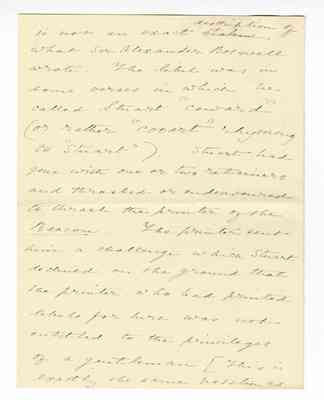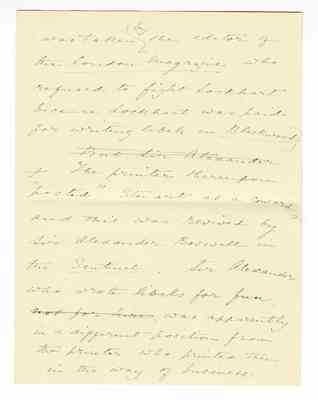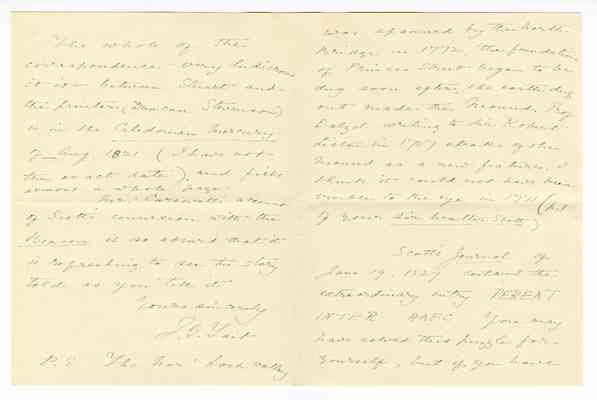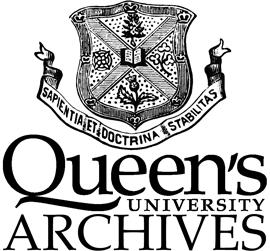Pages
page_0001
38 George Square Edinburgh 7th April 1932
John Buchan Esq., M.P.
Dear Sir,
There is a slight slip in your account of the Beacon (Sir Walter Scott p. 234)
Scott's letter to Constable which you quote is dated 30 Sept 1821. There was no longer any risk of Scott being challenged, for the Whigs had got all they
page_0002
wanted. They had suppressed the Beacon, made the Lord Advocate eat humble pie, and obtained from some of Scott's friends the assurance that he had no hand in the libels.
The whole of the correspondence between the Lord Advocate & James Stuart of Dunearn (17 letters in all dated from 13th to 19th September) is printed in the Calendonian Mercury of 20th Sept.
Some days later the Caledonian Mercury announced that the obligants to the bond of credit had held a meeting on the 19th and decided to withdraw their names from the bond, and on the 20th they communicated this resolution to the Bank.
So it seems clear that when Scott ten days later wrote that he expected to hear of some one being killed, he meant that the rancour which had inspired the Beacon would probably burst out in some new offences.
In your reference to the Sentinent (p. 235) "articles"
page_0003
is not an exact statem description of what Sir Alexander Boswell wrote. The libel was in some verses in which he called Stuart "coward" (or rather "cooart" rhyming to "Stuart"). Stuart had gone with one or two retainers and thrashed or endeavoured to thrash the printer of the Beacon. The printer sent him a challenge which Stuart declined on the ground that the printer who had printed libels for hire was not entitled to the privileges of a gentleman [This is exactly the same position as
page_0004
was taken by the editor of the London Magazine who refused to fight Lockhart because Lockhart was paid for writing libels in Blackwood]
But Sir Alexander I The printer thereupon "posted" Stuart as a coward, and this was revived by Sir Alexander Boswell in the Sentinel. Sir Alexander who wrote libels for fun, not for hire, was apparently in a different position from the printer who printed them in the way of business.
page_0005
The whole of the correspondence - very ludicrous it is - between Stuart and the printer (Duncan Stevenson) is in the Caledonian Mercury of Aug. 1821 (I have not the exact date) and fills almost a whole page.
Mr. Carswell's account of Scott's connexion with the Beacon is so absurd that it is refreshing to see the story told as you tell it.
Yours sincerely
J.S. Yait
P.S. The Nor' Loch valley was spanned by this North Bridge in 1772, the foundations of Princes Street began to be dug soon after, the earth dug out made the Mound. Prof. Dalzel writing to Sir Robert Liston in 1787 speaks of the Mound as a few feature. I think it - could not have been visible to the eye in 1771 (p.1 of your Sir Walter Scott)
Scott's Journal of June 19, 1827 contains the extraordinary entry PEREAT INTER HAEC. You may have solved this puzzle for yourself, but if you have







